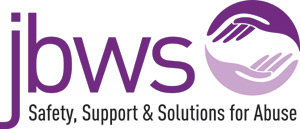School is back in session and you’re attending the first class of your favorite subject, but you can’t focus on anything the teacher is saying. You’re consumed with worry about your mother and younger siblings after the fight last night. “Did mom get to work okay?” “Is my baby sister safe?” “Will the yelling and screaming happen again tonight?” You’re so caught up in these worries that you don’t even hear the teacher ask you a question and your new classmates quietly mock you for it.
Do you think this is an environment conducive to learning?
According to the 2020 Domestic Violence Offense Report, children were present or involved in 24% of incidents of domestic violence reported to the New Jersey police. Being directly involved in an incident of domestic violence, seeing or hearing it occur, or experiencing the aftermath of it (such as injuries on a parent), can be traumatizing to children.
“It’s really hard to be engaged and present in a learning space after you’ve experienced any sort of trauma,” explains Stephanie Klotz, professional training manager at JBWS. “With domestic violence, there is a chronic nature to that trauma and many different ways it might play out for kids.”
While some students may fall behind in their studies, engage in risky behaviors, or have difficulty concentrating, other children experiencing domestic violence may excel in the classroom.
“Some kids excel in school because that’s something they have control over,” says Klotz. “They think: ‘If I can just be better, maybe my parent’s will stop fighting’ or ‘If I can just be perfect, maybe everything will change.’”
Unfortunately, this type of response to domestic violence often goes unnoticed by teachers because they are simply seen as quiet perfectionists. Since there is no singular way for trauma to show up in children, it’s important to be able to recognize the potential impacts of trauma in children.
Psychical Impact:
- Direct involvement can lead to the child being injured
- A child may develop stress-related physical ailments including headaches, stomachaches, ulcers, and rashes
- A child may have a disruption in sleep (nightmares) or eating patterns (over or under eating)
- They may have of loss of acquired skill and revert to thumb-sucking, nail biting, and bed-wetting
Emotional and Psychology Impact:
- Depression: withdrawal, emotional numbing, lack of responsiveness
- Anxiety: worries, fears, difficulty separating, inconsolable crying
- Guilt: about loving or hating the abuser and managing conflicting emotions
- Blame: themselves for the abuse or think it happened because of them
- Feel helpless about not being able to stop the violence
- Parentification: feel the need to protect, provide, be a caretaker
- Greater risk for substance use, eating disorders, unsafe/risky sexual behavior, attempted suicide, and running away
- Experience hyperarousal and hypervigilance
Social Impact:
- Increased aggression or impulsive behavior
- They may use abuse as a learned behavior
- May be confrontational to keep themselves safe, both psychologically and physically
- Use of violence to solve problems
- Inability to solve problems, lack of accountability
- Difficulty with concentration and task completion at school
- School avoidance and truancy
- Fear and distrust of relationships
JBWS offers services for children including counseling, trauma focused behavioral therapy, and children’s recreational activities while their parents attend group counseling. If you or someone you know is experiencing domestic violence, call 1.877. R. U. ABUSED]

